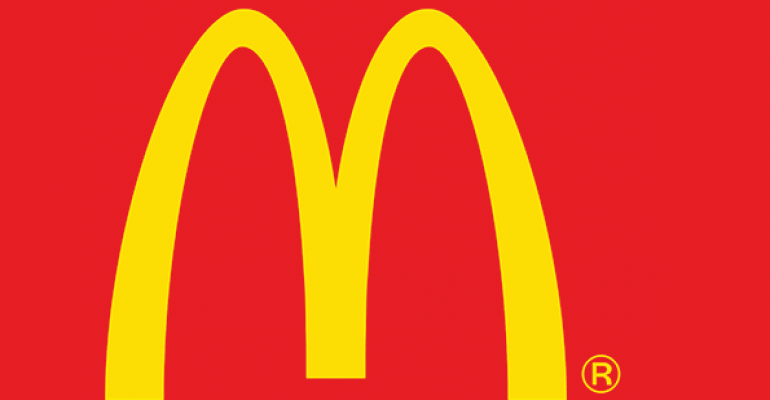Investors are betting that McDonald’s Corp. will regain the customers it has lost since 2012, which could be bad for the rest of the restaurant industry.
The Oak Brook, Ill.-based chain’s stock has risen 23 percent so far this year, and hit an all-time high of $149.99 per share this week. Investors are buying into the idea that McDonald’s will show strong sales as the year goes on, thanks to efforts to improve both the food and the experience in its restaurants.
But a reinvigorated McDonald’s could have a significant impact on the rest of the industry, and especially on quick-service restaurants, simply because of its immense size.
“It could be negative for the other players in the industry,” said Carla Norfleet Taylor, restaurant analyst for Fitch Ratings.
With 14,000 restaurants and average unit volumes in excess of $2.5 million, McDonald’s is by far the largest restaurant chain in the country. Despite losing 500 million transactions since 2012, the company remains more than twice the size of its next largest competitor in terms of system sales.
To put it another way, McDonald’s business is roughly the size of Starbucks, Subway and Taco Bell, combined.
Even in the quick-service burger category, one of the largest and most established segments in the restaurant industry, McDonald’s market share is immense. It accounts for more than 46 percent of the share of the country’s largest burger chains, according to NRN Top 100 data.
McDonald’s has lost some share in recent years amid sales struggles, while competitors gained ground. Earlier this year, McDonald’s executives said much of the 500 million transactions it lost were to its more immediate competitors in the quick-service burger segment.
The company has worked feverishly to regain those transactions, and has generated some momentum under CEO Steve Easterbrook.
McDonald’s U.S. same-store sales grew 1.7 percent in the first three months of the year, an increase that surprised analysts who expected a pullback due to difficult comparisons from the previous year. Instead, McDonald’s was the strongest performer among limited-service burger chains during a difficult market.

What’s more, there’s a sense that the company can continue its momentum as the year goes on, thanks to easier comparisons and various strategies the chain is using to get customers in the door.
McDonald’s introduced its Signature Crafted line of sandwiches last month, to great fanfare. The company has gained some traffic by offering $1 drinks nationwide.
The company is rapidly expanding delivery, now offered in more than 1,000 locations, and plans to add mobile order and pay — as well as curbside service — in the remainder of the year.
In the coming years, McDonald’s expects to add kiosks at restaurants across the country in what it calls the “Experience of the Future,” and next year it will start making Quarter Pounder burgers with fresh beef, made to order. The chain also wants to bolster its McCafé line.
In a report on consumer business sectors on Thursday, Fitch Ratings said it views McDonald’s efforts positively. But the service also said it expects volatility in the chain’s same-store sales due to heightened competition.
Still, Norfleet Taylor suggested that McDonald’s could boost its market share as Walmart is doing in the retail world — by flexing its considerable financial muscle.

“Conventional wisdom in the industry says that if you have a big share of the market, you’re bound to lose some share,” Norfleet Taylor said. “Yet Walmart is gaining share. They’re leveraging their financial strength by reducing prices to make themselves more attractive to consumers. McDonald’s has a lot of the same ability to do that.”
Other analysts certainly appear to be on board. According to Nasdaq, 14 analysts have “Strong Buy” ratings on McDonald’s stock, and one has a “Buy” rating. By comparison, eight analysts have a “Hold” rating on McDonald’s stock, and none suggest that investors should sell the stock.
Sara Senatore, an analyst with Bernstein Research, is bullish on McDonald’s stock, and has a price target on it of $170 per share. She suggested that another McDonald’s strategy, an expected launch of a loyalty program in 2018, could generate further sales momentum by improving customer frequency.
“McDonald’s higher average frequency and lower average check make it better suited to loyalty than many other concepts,” Senatore wrote in a note this week.
To be sure, not everyone said McDonald’s success will result in poor results everywhere. That includes Wall Street. For instance, Wendy’s stock has risen 22 percent this year. And stock in Burger King owner Restaurant Brands International Inc. — which swallowed the chicken chain Popeyes Louisiana Kitchen this year — has increased 28 percent.

In an earnings call earlier this month, Wendy’s CEO Todd Penegor dismissed suggestions that McDonald’s fresh beef move next year will hurt the chain’s sales. In fact, he expects it to help Wendy’s sales.
“It does create more awareness,” Penegor said. “It adds some credibility to what we’ve been saying for almost 40 years.”
To be sure, McDonald’s has a long way to go to improve consumer views of its brand. The company is intent on changing that perception. It removed artificial ingredients from its Chicken McNuggets last year, and did the same with its ice cream this year, while also shifting to cage-free eggs.
But McDonald’s remains near the bottom of many consumer rankings of restaurant chains. To regain share, the company needs to strengthen its brand image with younger consumers, Norfleet Taylor said.
“That still hasn’t occurred,” she said. “And McDonald’s may have a more difficult shot at that. It’s more difficult for McDonald’s to do that than it is for Walmart.”
Contact Jonathan Maze at [email protected]
Follow him on Twitter: @jonathanmaze

